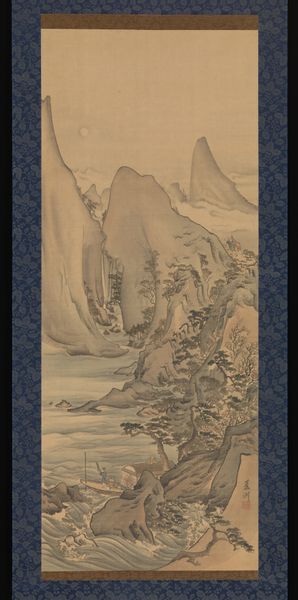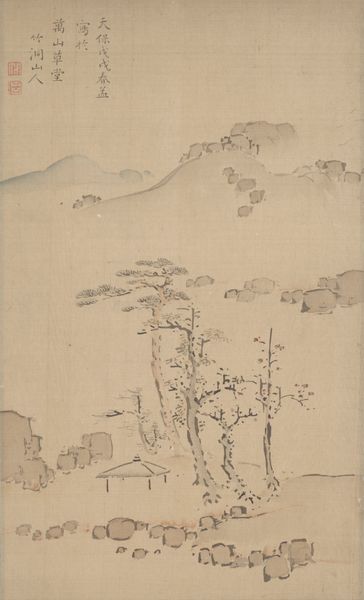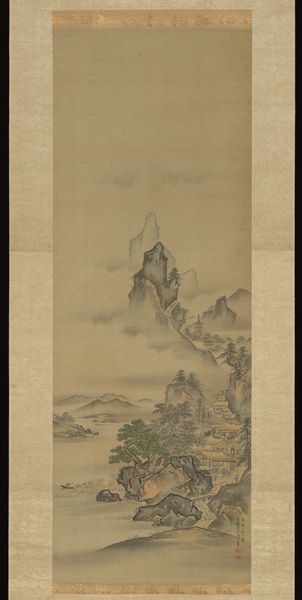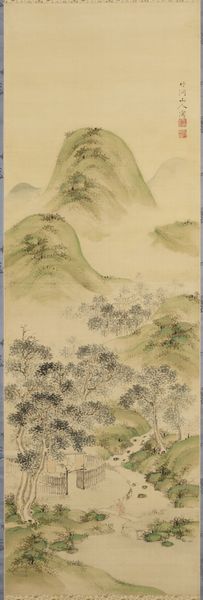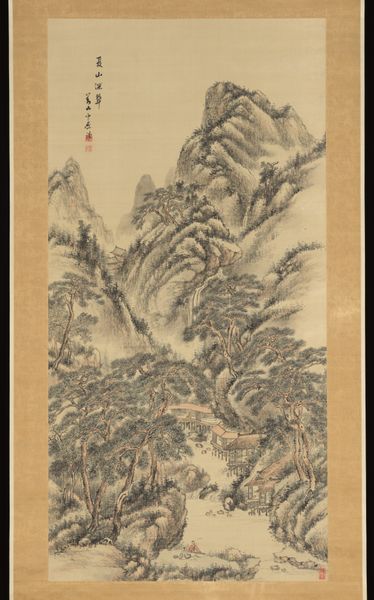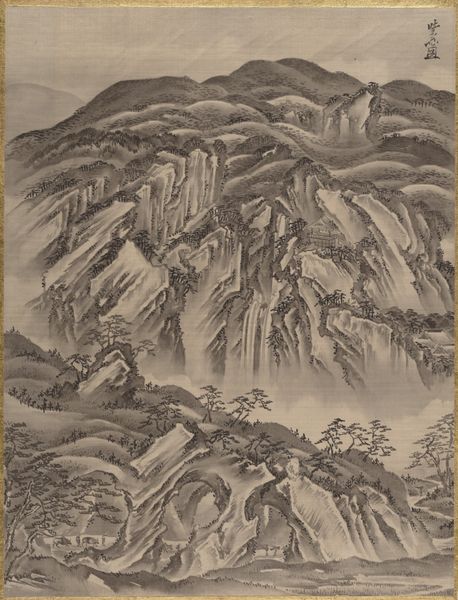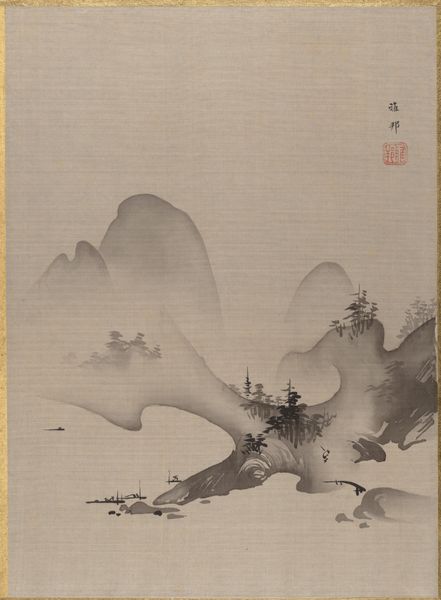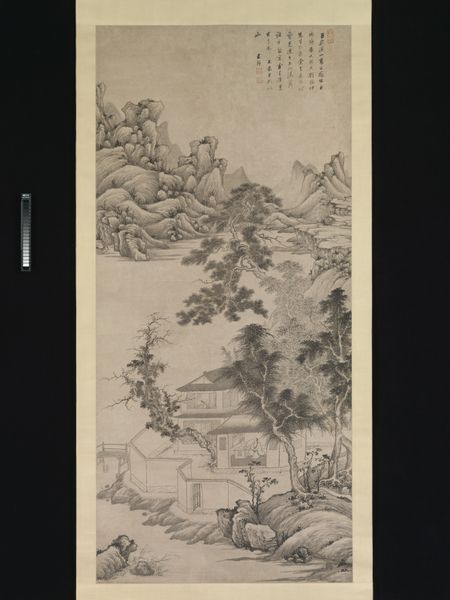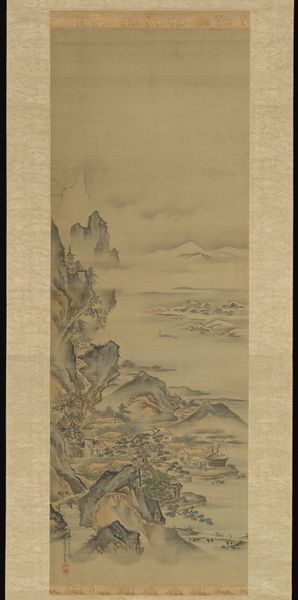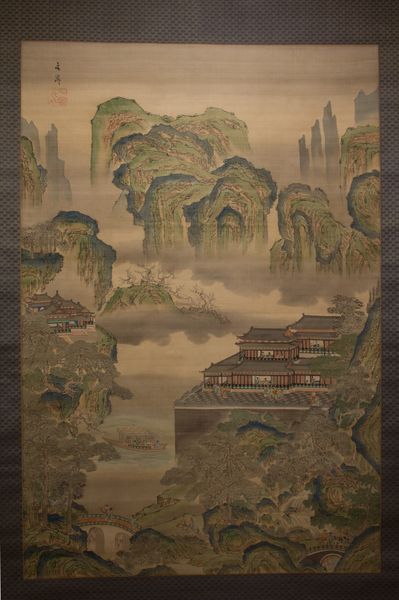
drawing, ink
#
drawing
#
ink painting
#
asian-art
#
landscape
#
ink
#
orientalism
#
yamato-e
Dimensions: 51 9/16 x 22 1/8 in. (130.97 x 56.2 cm) (image)74 11/16 x 28 1/8 in. (189.71 x 71.44 cm) (without roller)
Copyright: Public Domain
Ganku painted Mount Gabi with ink on silk, capturing a scene laden with symbolism. The mountain itself, often seen as a bridge between earth and sky, represents stability and the eternal. Notice how the trees, particularly the pines, cling tenaciously to the rocks. Across cultures, the pine tree is a symbol of resilience, longevity, and steadfastness, reflecting a deeply rooted human desire for permanence. Similarly, the mists that envelop the mountains evoke a sense of mystery. In dream analysis, mist can symbolize confusion or uncertainty but also a veil that hints at hidden truths waiting to be discovered. Throughout time, mountains and trees have appeared in art as expressions of human aspiration and spiritual seeking. This symbolism of nature as an emotional and psychological mirror reminds us that even in a modern world, our subconscious yearns for connection with the primal forces of nature.
Comments
minneapolisinstituteofart almost 2 years ago
⋮
Mount Gabi is the Japanese name for Mount Emei, located in Sichuan province in southwest China. One of the Four Sacred Buddhist Mountains, Mount Emei became particularly famous in Japan thanks to a poem by the Chinese poet Li Bai (701–762). 峨眉山月半輪秋影入平羌江水流夜發清溪向三峽思君不見下渝州 Mount Emei’s moon – half round in autumn;Its image cast on the Pingqiang, flowing onward.Tonight, as I leave Clear Creek for the Three Gorges,I think of you, unseen, heading down to Yuzhou.(trans. James M. Hargett) In this painting, Ganku depicts Li Bai looking out from a boat, with Mount Emei looming in the distance. Ganku painted Mount Emei from depictions in other books and paintings, as he never had a chance to visit China.
Join the conversation
Join millions of artists and users on Artera today and experience the ultimate creative platform.
